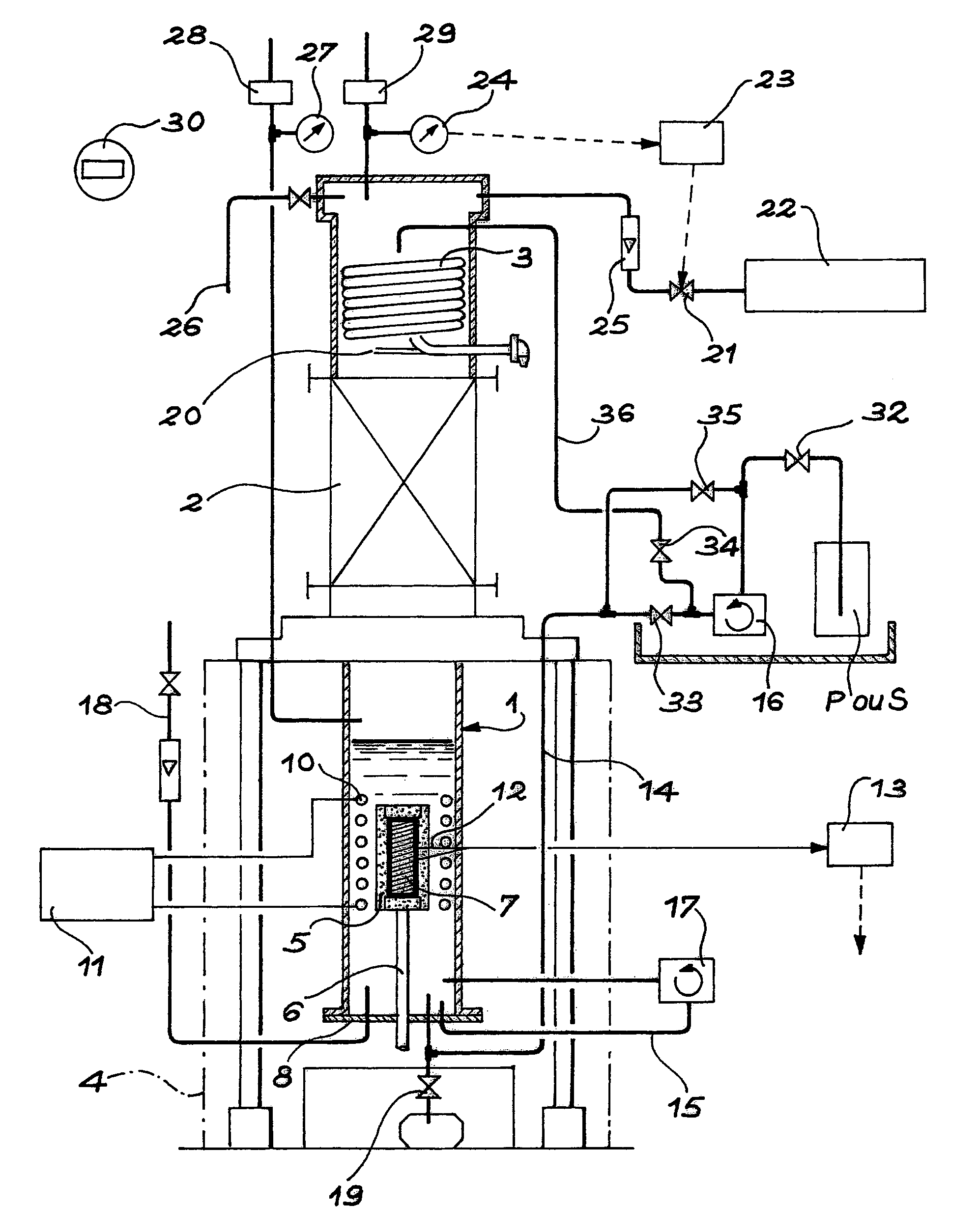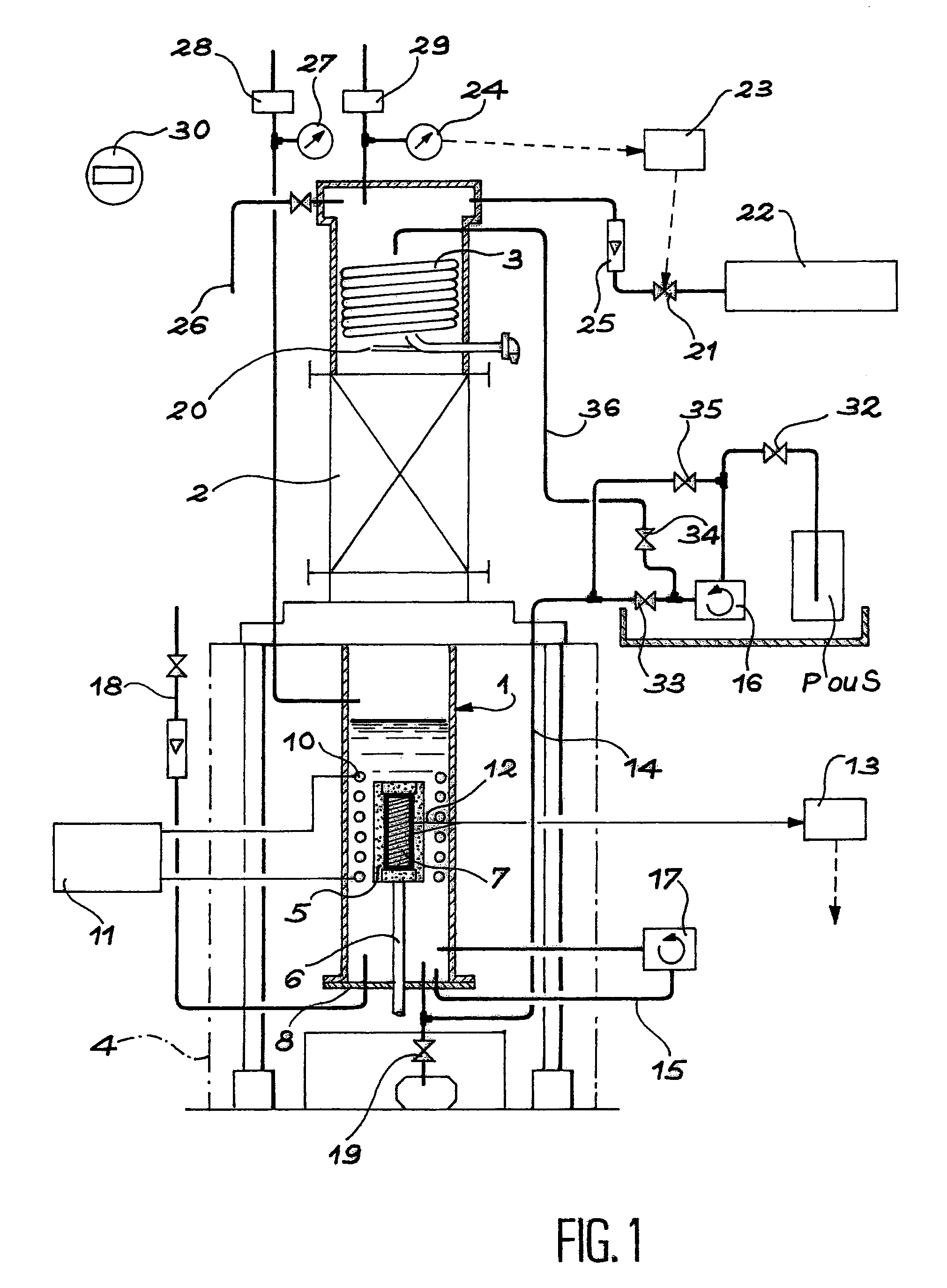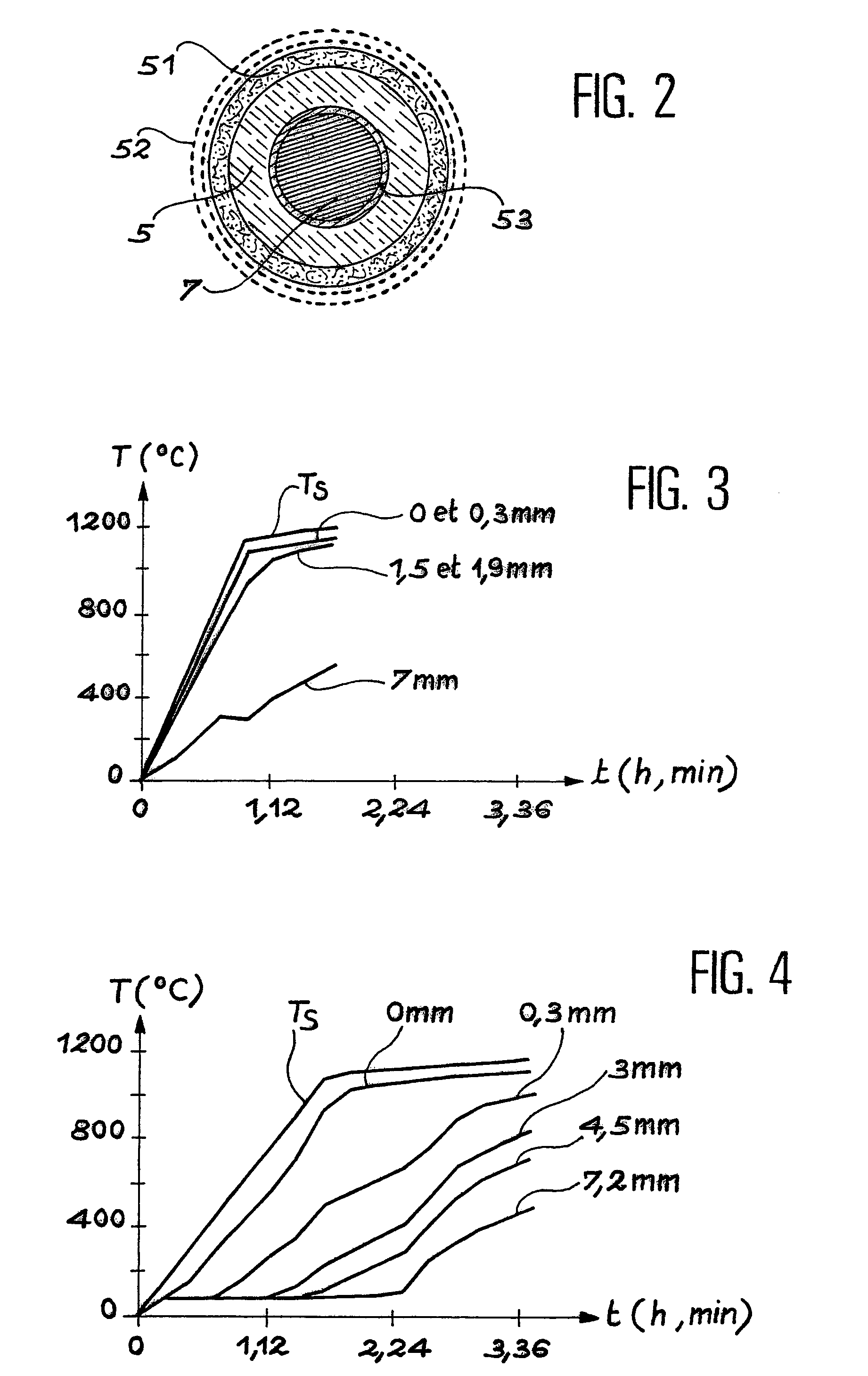Methods for calefaction densification of a porous structure
a porous structure and densification method technology, applied in the field of densification methods of porous structures, can solve the problems of poor energy yield, non-optimized densification rates, and densification rate decline, and achieve the effect of increasing porosity
- Summary
- Abstract
- Description
- Claims
- Application Information
AI Technical Summary
Benefits of technology
Problems solved by technology
Method used
Image
Examples
example 1
[0070]The reactor used has an inside diameter of 200 mm, an height of 300 mm. The inductor that is arranged inside the reactor, has a height of 150 mm and is comprised of six turns having inside and outside diameters having values of 175 mm and 195 mm, respectively.
[0071]The susceptor used has a diameter-of 80 mm and a height of 100 mm. It is entirely covered using three pieces of carbon felt (density 0.40 to 0.45) to be densified:[0072]a hollow cylinder having inside and outside diameters, respectively, of 80 and 120 mm and a height of 100 mm, covering its lateral surface;[0073]two disks having a diameter of 120 mm and a thickness of 20 mm covering the top and bottom parts of the two flat surfaces.
[0074]The system is covered with a filter formed of two layers of polytetrafluorethlylene GORE-TEX®, having the following characteristics:[0075]thickness of one layer: 0.2 mm;[0076]filtration: allows passage only of particles of a diameter less than 7.5 μm;[0077]permeability: 1 Darcy (or ...
example 2
[0089]This example relates to the densification of small pieces of carbon. Heating is done resistively.
[0090]The heating element is a bar of graphite 3 mm in diameter. It is surrounded by the sample to be densified, which is a tube of carbon felt (density 0.1) 2 cm in diameter and 3 cm in height. The system is enveloped in a filter formed of two layers of GORE-TEX® tissue, as in Example 1.
[0091]The pressure is set at 0.1 MPa. The temperature increase is done at a rate of 1,000° C. / h up to 1,100° C. The temperature is held at 1,100° C. for 30 minutes, then lowered at a rate of 1,000° C. / h.
[0092]The results are as follows:[0093]the rate of densification is 4 mm / h;[0094]the energy consumed is 110 kWh / kg of carbon deposited;[0095]the density is 1.8.
[0096]By comparison, if there were no GORE-TEX® filter, under the same conditions:[0097]the rate of densification is 0.6 mm / h;[0098]the energy consumed is 1,400 kWh / kg of carbon deposited;[0099]the density is 1.8.
[0100]FIGS. 3 and 4 represent...
PUM
| Property | Measurement | Unit |
|---|---|---|
| thickness | aaaaa | aaaaa |
| thickness | aaaaa | aaaaa |
| thickness | aaaaa | aaaaa |
Abstract
Description
Claims
Application Information
 Login to View More
Login to View More - R&D
- Intellectual Property
- Life Sciences
- Materials
- Tech Scout
- Unparalleled Data Quality
- Higher Quality Content
- 60% Fewer Hallucinations
Browse by: Latest US Patents, China's latest patents, Technical Efficacy Thesaurus, Application Domain, Technology Topic, Popular Technical Reports.
© 2025 PatSnap. All rights reserved.Legal|Privacy policy|Modern Slavery Act Transparency Statement|Sitemap|About US| Contact US: help@patsnap.com



